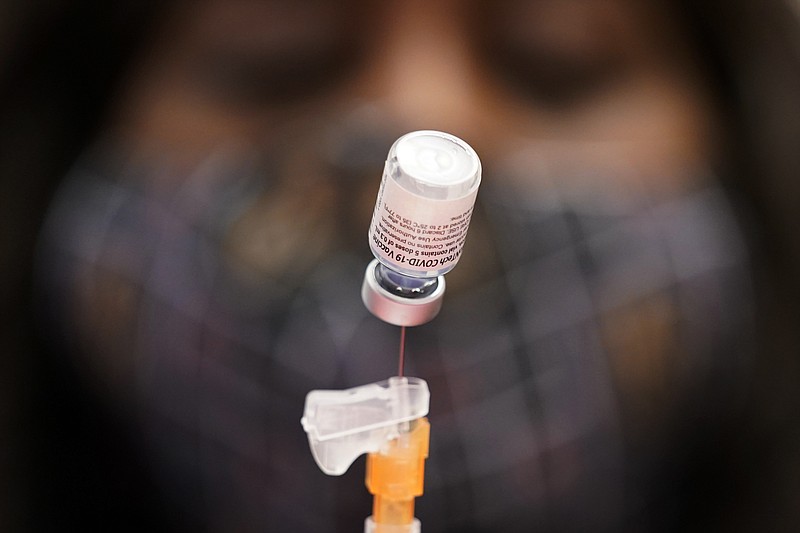After several months of record high numbers, Hamilton County's COVID-19 cases and hospitalizations have begun to trend downward toward October measures, according to the Hamilton County Health Department.
That's welcome news, and it mirrors a national trend. But we must not be lulled into abandoning public health practices such as wearing masks, social distancing and seeking vaccinations when the shots are available to us. National health experts fear there may yet be a fourth surge of illnesses as there are new and more contagious, dangerous variants of the virus now on the move - some identified in our region.
Despite a national vaccine distribution increase of 57% since Jan. 20 when President Joe Biden was inaugurated, there still are nowhere near enough vaccines for everyone who wants them - not even enough for the half of the U.S. population who now say would definitely get the shots if they were available.
White House press secretary Jen Psaki said Tuesday the federal government will start distributing 13.5 million doses of vaccine a week, up from 11 million currently.
As the vaccine production has increased, Hamilton County on Tuesday expanded age eligibility for vaccines to 65 years old and up. The county also includes teachers and other "essential" workers in the new eligibility.
Last week, at least several local teachers took matters into their own hands and made pilgrimages to more rural counties where shots are in less demand than in metropolitan areas like Chattanooga. It's hard to blame them.
The makers of vaccines are working to figure out how to tweak their recipes against the mutations, according to The Associated Press, and vaccine regulators are looking to the flu as a blueprint for if and when the shots need an update.
"It's not really something you can sort of flip a switch, do overnight," Richard Webby told the AP. Webby directs a World Health Organization flu center from St. Jude Children's Research Hospital.
Influenza mutates much faster than the coronavirus, and flu shots have to be adjusted just about every year. National centers around the globe collect circulating flu viruses and track how they're evolving. The researchers send samples to WHO-designated labs for more sophisticated "antigenic" testing to determine vaccine strength. The WHO and regulators then agree on the year's vaccine recipe and manufacturers get to work. A similar sort of constant booster program may be what we're looking at for COVID-19, as well.
Webby told AP that a critical step is establishing a similar COVID-19 surveillance and testing network to flag the mutations that matter. Today, there's wide geographic variability in tracking and testing mutated versions. For example, Britain does more testing of the changing viral genome than the U.S.
Researchers had been most concerned with three variants first discovered in Britain, South Africa and Brazil. Columbia University's David Ho put blood samples from people given the Pfizer or Moderna vaccines into lab dishes with the mutated virus. Vaccine-produced antibodies still protected, but they were much less potent.
Preliminary test results of two other vaccine candidates - from Novavax and Johnson & Johnson - soon backed up those findings. Both still protected but were weaker when tested in South Africa, where that variant dominates, than when tested elsewhere. A far smaller test of the AstraZeneca vaccine in South Africa has raised questions about its effect.
On Sunday, U.S. researchers reported a still different mutation found in seven variants that have cropped up in several states. It's too early, they say, to know if those are significant.
As welcome as these vaccine increases and improvements are, we must all be our own best doctors and advocates.
That means continued masking, social distancing and frequent hand washing. It especially means remaining vigilant for ourselves and each other.
